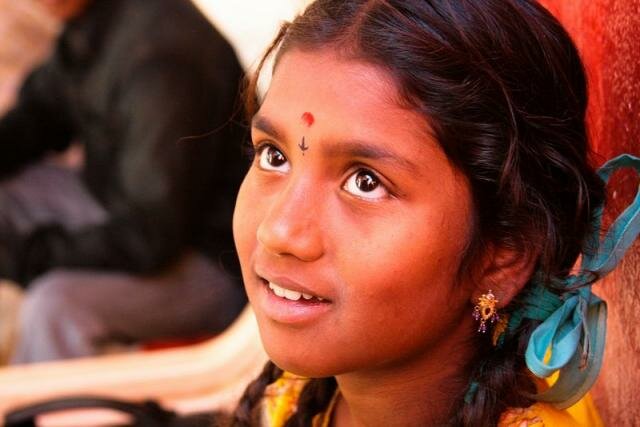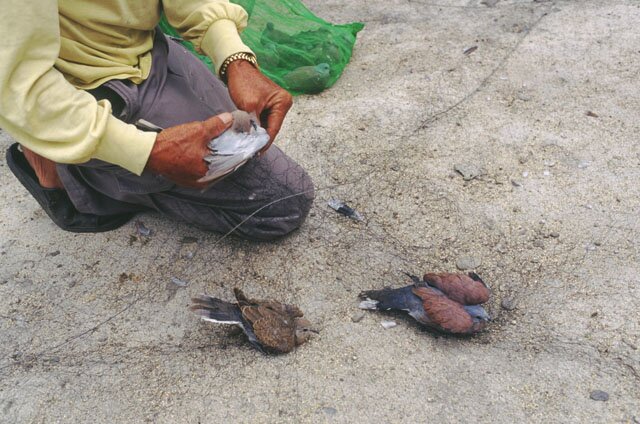BROWSE COUNTRIES/ TERRITORIES
Singing to read
Same Language Subtitling on Bollywood film songs, a solution for India’s illiteracy problems.
Women on the Verge of a Nervous Breakdown was the perfect movie to be watching as a PhD student trying to escape dissertation writing. It was 1996 and some of my friends and I were also trying to improve our Spanish by watching Pedro Almodóvar’s classic. We were all labouring to follow the original dialogue in Spanish. Two of my dearest friends were on the verge of giving birth.
The English subtitles were doing nothing to reduce anyone’s labour pains. In fact they made it harder to ‘hear’ the Spanish dialogue. Perhaps it was the air of birth and my inability to ignore the English subtitles that caused me to release two casual comments: “If only they would subtitle the Spanish dialogue in Spanish.” Pause. “And if they simply subtitled Hindi films in Hindi, on TV in India, maybe India would become literate.” The comments fused into a moment of conception. I got married to this idea I now call “Same Language Subtitling” or SLS.
Eleven years later, I’m still married to SLS. It is an idea born in an academic environment, where we like to dream up terms that we hope everyone else in the world will use forever – our way of achieving immortality!
So if “SLS” is now permanently on your lip, I can try to tell you why it's such a powerful idea for India's literacy, and I dare say, global literacy!
The vision behind the SLS project is to integrate reading into the lives of hundreds of millions of people, especially early-literates. Early-literates are those who may be able to write their name, but are not really literate. When the census official knocks on the door every 10 years, they report themselves, understandably, as “literate.” However, they are unable to read even the simplest of passages in a newspaper.
In 2001, the last time the census official showed up in the homes of India’s 680,000 villages, the literacy rate turned out to be 65.4%. Our research has uncovered that the “ability to read with understanding” rate, if literacy were so determined, is only 25% at best and the “early-literacy” rate is 40%!
There are, thus, at least 350 million early-literates in India and 290 million illiterates. While most literacy efforts of the government and NGOs focus on the illiterate, our goal in the SLS project in India is to make reading a naturally occurring and lifelong part of 350 million early-readers’ lives.
Same Language Subtitling (SLS) is the simple idea of subtitling song-based programmes on TV in the same language as the audio. Imagine watching Bollywood-style Hindi film songs with the lyrics subtitled in Hindi, every word highlighted as it is sung. Ditto in 22 official Indian languages… or any of the world’s languages.
SLS is a deceptively simple idea for the enormous contribution it can make for mass reading development in countries where TV viewers already watch song-based programmes with a passion and reading skills are low. SLS is karaoke with a difference! Karaoke is entertainment for the literate. SLS is designed for mass karaoke on popular song-based TV programming, targeting the early-literate.
SLS was first researched and developed at the Indian Institute of Management, Ahmedabad. Over the past 10 years, it has been researched, developed, and implemented in partnership with the national television broadcaster, Doordarshan, and its policy-making parent, the Broadcasting Corporation of India, Prasar Bharati. At our subtitling facilities in Mumbai and Pondicherry, we implement SLS on 10 weekly TV programmes of Bollywood-style film songs, in Hindi, Oriya, Telugu, Bengali, Gujarati, Marathi, Tamil, Telugu, Malayalam, and Kannada languages, covering most major states. This gives regular reading practice to 200 million early-literate viewers in their native language.
SLS costs very little. Every US dollar gets us 30 minutes of weekly reading practice for nearly 1,000 people on average, for one whole year. Several impact studies have consistently found that regular SLS exposure triggers automatic and subconscious reading among early-literates and this accelerates skill improvement.
The TV broadcaster gains too. 90% of TV viewers, including the literate, prefer having SLS for its power to enhance the entertainment value of song-based TV programming. People love to sing along and learn the song lyrics. Ratings of song-based TV programmes increased by around 15%.
SLS accelerates skill acquisition by creating practice opportunities at home. A strong impact on motivation for literacy is expected among non-literates and early-literates.

The antenna that brings reading to 680,000 villages
One of the biggest challenges in literacy is learner motivation. In our case, learner motivation to read along with the songs is inherent in people’s passion for Bollywood. It is a well-researched point that if SLS is there, it will invite reading engagement in anyone with some alphabetic familiarity, like being able to recognise a few letters. Learner frustration does not build up among the early-literate, while reading along with songs. The “answer” to what they are not able to read fast enough is always there, instantly in the audio or, in their mind if they know the song. SLS on songs naturally infuses plenty of successful moments in a struggling reader’s reading experience.
SLS has found national acceptance in India, but it is yet to become national policy, which would mandate SLS on every song in every language on TV. Over the years, our public broadcaster, Doordarshan, has warmed up sufficiently to permit the scaling up of SLS on song-based TV programmes, as long as it does not have to pay for this service. Finding the roughly $20,000 per TV programme annually is a major challenge, though. A proposal for state-supported long-term implementation of SLS, on 10 TV programmes in Hindi alone, is under consideration at the Prime Minister’s Office (PMO). Until SLS becomes national policy, a major financial challenge for us is to keep it on air on the 10 TV programmes it is already on. While the SLS project has always enjoyed short-term funding, from institutions like the World Bank and Google Foundation and a fellowship from Ashoka.org, this has not easily translated into steady funding.

Author interacting with viewers of subtitling in Gulbai Tekra slum
I had the opportunity to spend a year at Stanford University in 2003-2004. That sojourn resulted in the founding of PlanetRead, a non-profit organisation with presence in India and the US, and BookBox, Inc., a social venture.
PlanetRead advocates the scaling up of SLS in India and supports its spread to other countries. Around international literacy day on September 8, this year, SLS is to be featured at the “UNESCO Regional Conference in Support of Global Literacy” in Mali. Laura Bush, the First Lady of the US, is leading this dialogue on global literacy.
I am convinced that our literacy work should reduce its dependence on grant money by transforming itself into a successful company. We launched BookBox, Inc., a social venture with the mission of making reading an integral part of every child’s life. Every child should experience the joys of reading and become a fluent reader by age 14.

Children reading as part of a play in a slum in Ahmedabad
Drawing upon our SLS experience, BookBox innovated the concept of “AniBooks” or animations with SLS for electronic and digital media. Essentially, the narration of the animated story is subtitled word for word in the same language.
AniBooks are easily adapted in different languages, can be distributed on mass and individualised media (TV, downloads, VCDs, DVDs, iPod, cell phones, other handheld devices, and of course, print), and the cost of production for additional languages is marginal.
The standard response of many well-meaning reading initiatives is more books, more libraries, less TV. I call this the “Print Trap” and a gross under utilisation of the power of TV. At the risk of stating the obvious, “print” as a medium to transport the reading experience to masses of people, is a good idea, but, can it realistically be achieved in India? Imagine printing and distributing affordable, good quality children’s books in 22 official languages, books that could survive use in the rugged conditions of 680,000 villages!
BookBox’s innovation stems from an acceptance that children are inherently drawn to cartoons like a magnet. BookBox simply took the SLS experience and applied it to slow-paced animation to allow for reading engagement.
AniBooks can go where print does not go easily. And in a population as linguistically diverse and geographically dispersed as India’s, they offer a guaranteed way to bring reading to hundreds of millions of children.
Pedro Almodóvar for making Women on the Verge of a Nervous Breakdown! Strangely, it is contributing to global literacy.
Photos by Brij Kothari
*For more information, visit
www.planetread.org
www.bookbox.com
Login or Register
Brij Kothari is President of PlanetRead, a non-profit organization, which nationalised the use of "Same Language Subtitling" (SLS) in Bollywood film songs on TV for mass literacy in India. He is an Asoka Fellow and received his Masters in Development Communication and PhD in Education at Cornell University. Brij grew up in the Sri Aurobindo Ashram in Pondicherry.
- Asian Dynasties and History
- Conservation of the Environment
- Definition: Culture
- Economy and Economics
- Food and Recipe
- Geopolitics and Strategic Relations
- Health and Body
- Of Government and Politics
- Religion and Practices
- Social Injustices and Poverty Report
- Society, Class and Division
- Unrest, Conflicts and Wars






























 Another Point
Another Point From Jerusalem to the West Bank
From Jerusalem to the West Bank
Comments
Post new comment